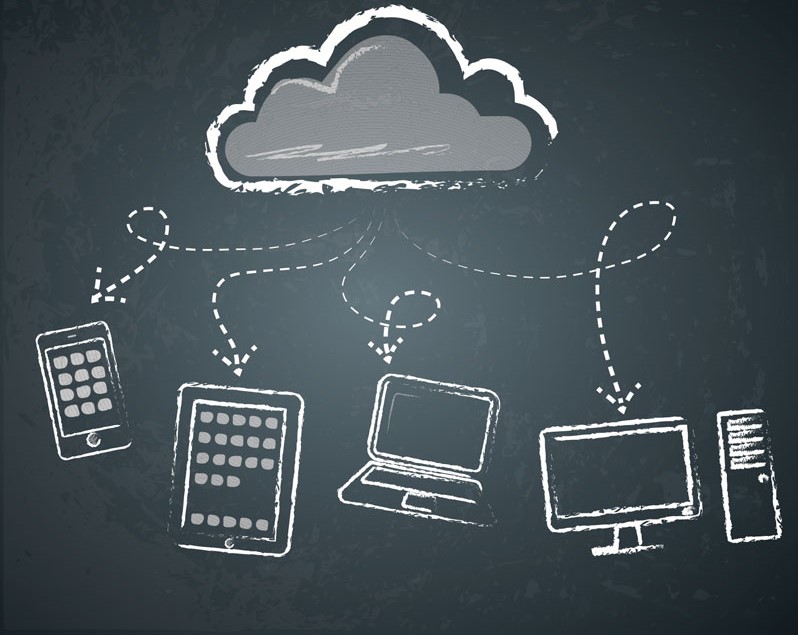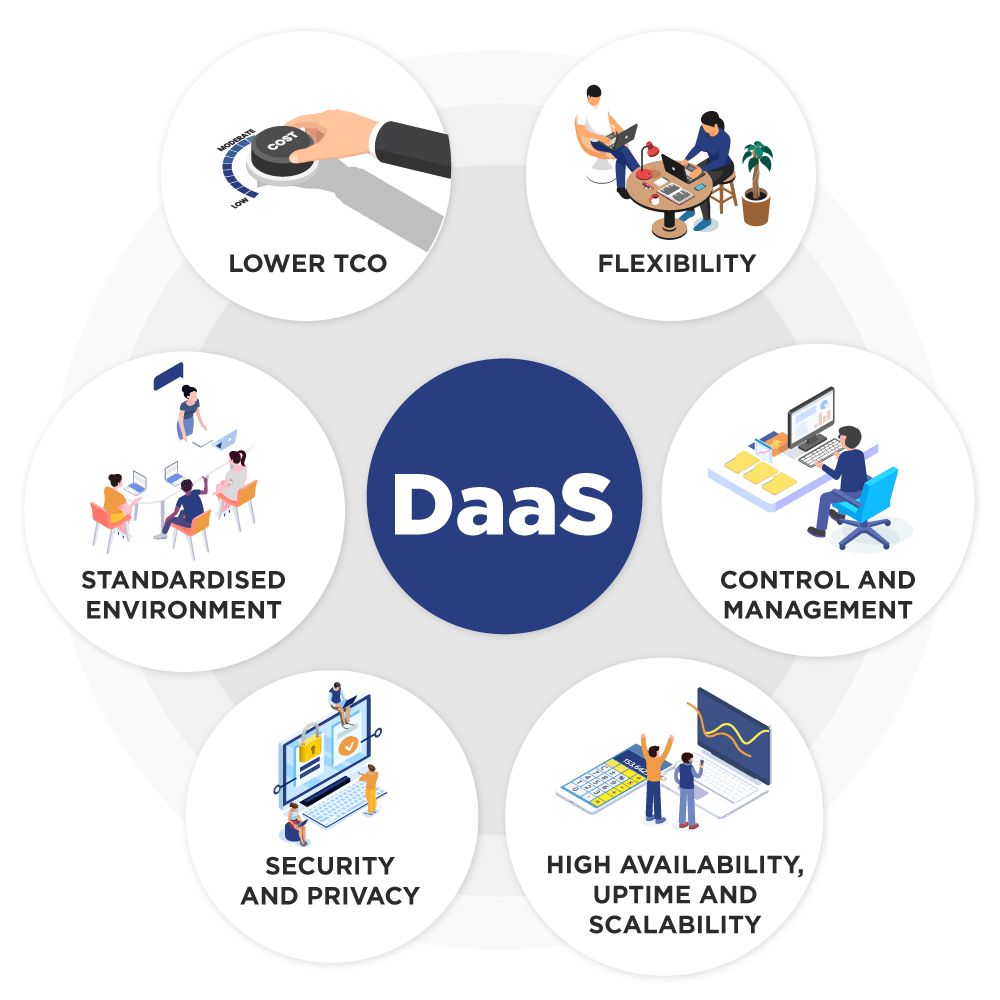
Why Covid 19 drove an increase in Daas?
Why COVID-19 Drove an Increase in DaaS?
Due to the COVID-19, the pandemic of 2020, digital transformation, and the work-from-home movement may not be the only major technology developments gaining traction. The Device-as-a-Service (DaaS) model of purchasing hardware without having to purchase, customize, and handle it has also gained traction in the business IT marketplace. The number of DaaS projects rose during the pandemic, but those built solely to save money are more likely to fail.
In the first quarter of 2020, a leading worldwide software firm revealed a threefold increase in desktop-as-a-service (DaaS) projects. According to Gartner, the number of DaaS customers will increase by more than 150% between 2020 and 2023.
One of the big drivers of this expansion would be the need to provide cost-effective, secure remote working spaces for companies that want to take advantage of the benefits of distributed work.
Historically, DaaS has been thought of as an IT cost-cutting measure for businesses — a business case that has failed 80% of the time. The pandemic, on the other hand, brought with it a straightforward and convincing need: organizations needed to keep working, but with employees working from home and using a variety of devices. DaaS proved to be a safe and scalable option.
The cost of setting up virtual desktops, as well as the projected total cost of ownership (TCO), are still comparatively high. The cost of DaaS is moved from the capital expenditures (capex) to operating expenses (opex), which raises the cost even more.
To Kevin Dobbs, the leader of Accenture's Everything-as-a-Service practice, it's where PC makers and other hardware suppliers need to go if they want to keep up with business and consumer expectations and demands.
With DaaS, vendors take laptops, desktop PCs, and other devices and preconfigure and customize them with productivity and security applications as well as value-added services to ready them for business or consumer customers. The devices aren't purchased outright by companies like in the past, but are paid for on a consumption model.
To keep a DaaS project running smoothly, I&O executives must:
- Decide on your target market. Segment the user base by job function and location to securely identify candidate use cases for desktop and application virtualization.
- Make safety a top priority. You can reduce and eradicate attack surfaces while also optimizing the management of heavily distributed endpoints by prioritizing thin-client architectures for desk-based workers.
- Extend the use of DaaS beyond just business continuity. Use desktop virtualization to speed up and lower the cost of onboarding new hires.

DaaS providers preconfigure and customize notebooks, desktop PCs, and other devices with productivity and security applications, as well as value-added services, to prepare them for enterprise or consumer users. Companies, unlike in the past, do not buy the devices outright, but rather pay for them on a subscription basis.
That may appear to be a lease, but it is not. They may appear alike, but DaaS is less about the device and more about the services associated with it.
The rise in work-from-home opportunities because of the pandemic may provide a significant boost to DaaS adoption in the future. Companies that scrambled to send employees home to do their jobs as the pandemic caused nationwide shutdowns were often forced into a laptop-buying frenzy.
This soon discovered that it was less expensive to purchase the machines fully loaded, configured, and ready for employees to do their jobs from home. For businesses, it basically simplified the process of rapidly enabling a vast number of at-home employees that they did not previously have. As appropriate, DaaS arrangements include product support from suppliers or partners.
It provides an easy way to get assistance, and they would rather buy products that are pre-configured with software and security. I believe that much of the consumer purchasing pattern is shifting in that direction.
Vendor advantages and disadvantages
While all of this can be useful to consumers, the DaaS model also offers a blend of significant advantages and significant difficulties for hardware suppliers.
First, because clients use the devices until they are no longer useful, the manufacturers receive them and can assemble, refurbish, and resell them to new users up to four times over the useful life of the devices, maximizing returns on investment.
It is a wonderful choice for sellers because, instead of selling a product once, they can sell it up to five times. The advantage is that by maintaining control of the devices and surrounding them with various types of services and capabilities, you can provide more to consumers each time. The margins in the hardware industry are razor-thin, so here you sell it over and over. That is why we believe this is a promising trend.
It will also help hardware distributors increase revenue at a time when sales may be down due to the rising popularity of business customers shifting workloads to the cloud. When users migrate to the cloud, hardware sales are often lost in the process.
"As manufacturers and channel partners enter the next phase of their development, DaaS becomes a more appealing path to take."
But there are many difficulties. To permit DaaS, vendors must rely on complex supply chains to gather, refurbish, and redistribute all of that equipment "That means suppliers must take a very different approach to how they sell their products. We are seeing an increasing number of businesses considering this possibility.
Creating and sustaining the necessary supply chains to provide a seamless experience for consumers, on the other hand, is a difficult task. "When we are talking about millions of devices and being able to orchestrate them to make money for distributors, it's tricky to do these things on a scale. Companies that already have those supply chains, on the other hand, would be able to extract more value from them.
Let’s look at some of the biggest reasons why companies are turning to DaaS so you can make the decision for yourself:

- Supporting remote workers – Well before COVID-19 pushed millions to work from home, DaaS has made productive remote working possible. DaaS can run natively from private or public cloud infrastructures and it frees employees to run their essential apps on their favorite devices. The platform also frees up IT departments from having to track and update each employee’s device.
- Added flexibility – A DaaS environment is flexible. Customers can create a DaaS environment to meet their exact needs, including for Windows and Linux environments.
- Built-in backup and disaster recovery – While DaaS is not a complete Business Continuity (BC) and DR solution, having all resources stored and accessible in the cloud helps companies stay on track, even after a disaster. Employees can access the desktops and business-critical apps from anywhere, as long as the cloud environment isn’t impacted.
- Endpoint security – Using DaaS can strengthen a company’s security posture because data and applications reside in the cloud, rather than having them on vulnerable end-user devices. DaaS also enables teams to deliver a consistent set of security tools, controls, and policies across devices, regardless of operating system or hardware.
- Maintaining privacy – Similar to strengthening endpoint security, data privacy also improves with DaaS because data is not ever downloaded, processed, stored on the local device itself. Instead, information is only displayed on the device. Organizations, alternatively, store data in an on-premise data center or with a public cloud service. Companies can then apply their security policies, including permissions and Identity and Access Management (IAM) tools, encryption, anti-malware, and data loss prevention tools centrally.
- Lower computing costs per user – It used to be that running heavy-duty software such as 3D modeling or animation programs, required using devices that could handle high-compute performance requirements. And, typically, hardware and accessories with high-speed CPU processing power are expensive. Now, thanks to DaaS, teams no longer have to invest a lot of money into the devices or computers themselves. Even computers with less processing power and high-density graphics cards, for example, can efficiently run high-compute programs. On top of that, organizations can convert older laptops to take advantage of a centralized DaaS delivery, for a fraction of the cost of buying new equipment.
- Streamlining PC administration – Because data and applications are hosted in the cloud, it’s hyper convenient for users and IT alike. Relying on a DaaS infrastructure, IT managers have the ability to manage, install, and update applications and data services remotely. A DaaS partner is also useful because there’s a single-point-of-contact for making sure desktop services are running smoothly.
DaaS concerns the customer
Finally, DaaS is gaining traction because both enterprise clients and consumers want to make their lives easier. Customers do not care about the device itself in the end. They just want an outcome. They just want it replaced if it breaks. They want to be served. Customers value one of these things.
And this is where the versatility and value of DaaS will help consumers solve problems. Customers now prefer to receive their devices in this manner. Business shoppers expect the same quality of service and experience in their professional lives as they do in their personal lives. Customers like to try before they buy, pay as they go, and have a more consumption-based model in which they are charged for what they use.
Customers who use DaaS may pay less upfront but may pay more in the long run for the overall package of devices, integrated services, and support. Customers are typically drawn to DaaS for reasons other than cost savings.
It will be a difficult environment in the future for hardware suppliers that do not meet these demands.
Today's opportunity is to do so proactively. Customers like to buy it this way, so you will have to go this way whether you like it or not. COVID-19 also emphasizes the fact that this technique will be adopted by an increasing number of clients. .